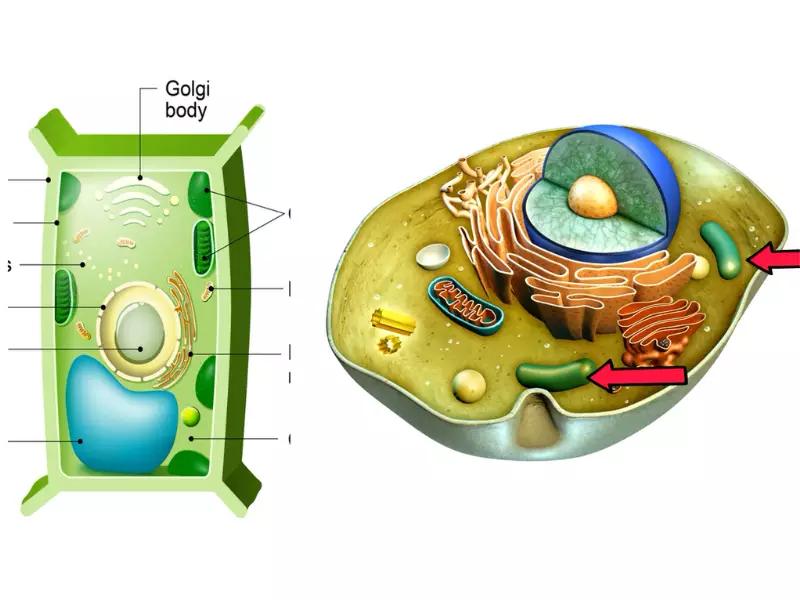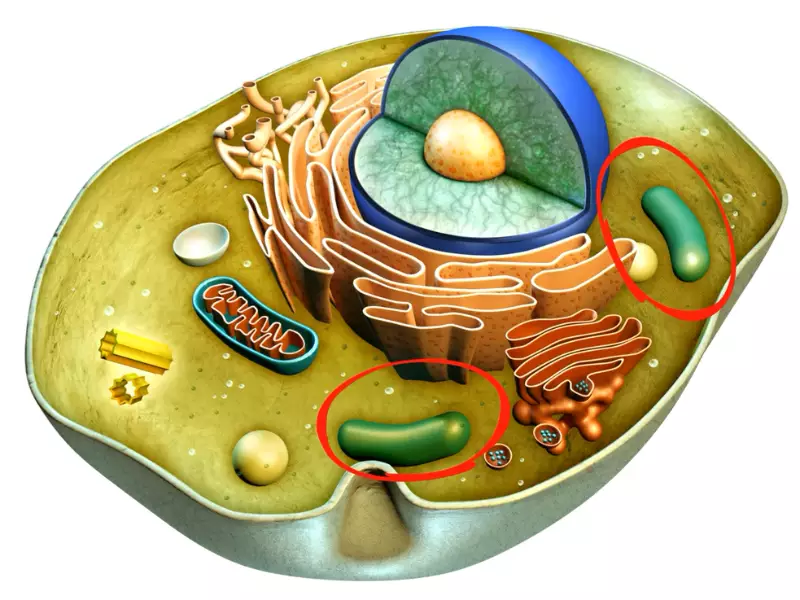Cells, the fundamental units of life, are marvels of nature’s engineering, equipped with specialized structures to perform a myriad of functions essential for survival. Among these, vacuoles stand out for their diverse roles, from storage to maintaining cellular balance. This article explores the distinct functions and structures of two specific types of vacuoles: food vacuoles and contractile vacuoles, highlighting their critical roles in cellular activities.
The primary difference between food vacuoles and contractile vacuoles lies in their function. Food vacuoles are involved in the digestion process, encapsulating nutrients for cellular absorption, while contractile vacuoles play a crucial role in osmoregulation, expelling excess water to maintain the cell’s internal environment. Despite their varying functions, both are vital for the cell’s survival and efficient operation.
Food vacuoles originate from the cell membrane and are instrumental in breaking down food particles, whereas contractile vacuoles, found predominantly in freshwater protozoans, act as the cell’s pumping mechanism against osmotic pressure. Understanding these vacuoles provides insights into cellular functionality and organism adaptation to environmental challenges.

Vacuole Basics
Definition and Function
A vacuole is a membrane-bound organelle found in cells. Vacuoles perform a variety of functions, such as storing nutrients and waste products, helping to maintain the pressure inside the cell, and keeping the internal pH balanced. They are like storage tanks for cells, holding onto everything from water to enzymes.
Types of Vacuoles
There are mainly two types of vacuoles:
- Food vacuoles, which are involved in the digestion of nutrients.
- Contractile vacuoles, which help regulate the amount of water in cells, particularly important for cells living in freshwater environments.
Role in Cellular Homeostasis
Vacuoles play a critical role in cellular homeostasis—the process of maintaining a stable internal environment. They regulate the concentration of water and ions, which is vital for cell survival, especially in fluctuating environmental conditions.
Food Vacuole
Definition and Formation
A food vacuole is a type of vacuole that encloses food particles ingested by the cell. It forms when part of the cell membrane envelops the food particle, creating a separate compartment within the cell.
Role in Digestion
The primary role of food vacuoles is in digestion. They break down food particles so that the cell can use them for energy and growth. This process is crucial for cells to obtain necessary nutrients.
Process of Phagocytosis
- Encapsulation: The cell membrane extends around the food particle.
- Vacuole formation: Once fully enclosed, the membrane pinches off, forming the food vacuole.
- Digestion: Enzymes from lysosomes merge with the food vacuole to break down the contents.
Examples in Organisms
Many protozoa and single-celled organisms rely on food vacuoles for digestion. For example, amoebas capture food particles through phagocytosis, forming food vacuoles where the digestion occurs.
Composition and Structure
Inner Contents
The inner contents of food vacuoles include water, enzymes, and digested nutrients. These components are essential for breaking down food particles into smaller molecules that the cell can absorb.
Membrane Characteristics
The membrane of a food vacuole is selectively permeable, allowing certain molecules to pass through while keeping others inside. This selectivity is crucial for the digestion and nutrient absorption process.
Functionality in Digestion
Mechanism of Action
- Fusion with lysosomes: The food vacuole merges with a lysosome.
- Enzymatic breakdown: Enzymes from the lysosome digest the food particles.
- Nutrient absorption: The digested nutrients pass through the vacuole membrane into the cell.
Interaction with Lysosomes
The interaction between food vacuoles and lysosomes is a key step in the digestion process. Lysosomes release enzymes into the food vacuoles, facilitating the breakdown of complex molecules into simpler ones.
Nutrient Absorption and Waste
After digestion, nutrients are absorbed into the cell, while waste products remain in the vacuole for excretion.
Contractile Vacuole
Definition and Purpose
A contractile vacuole is a specialized vacuole that pumps excess water out of cells. This is especially important for organisms living in freshwater to prevent them from bursting due to osmotic pressure.
Regulation of Osmotic Pressure
Contractile vacuoles help maintain osmotic balance by expelling water, ensuring the cell does not take in too much water from its surroundings.
Examples in Organisms
Freshwater protozoans, like Paramecium, use contractile vacuoles to regulate their internal water content, adapting to changes in their environment.
Composition and Structure
Membrane Dynamics
The membrane of a contractile vacuole is highly dynamic, allowing it to expand and contract. This flexibility is key to its function in water expulsion.
Fluid Regulation Components
Components of the contractile vacuole include ion channels and pumps that manage the movement of water and ions, crucial for the vacuole’s osmoregulatory function.
Osmoregulation Process
Mechanism of Contraction
- Water accumulation: Water enters the vacuole through osmosis.
- Contraction: Once filled, the vacuole contracts, pushing water out of the cell.
Water Expulsion
The expulsion of water through the contractile vacuole is a critical survival mechanism for cells in hypotonic environments, preventing them from lysing.
Adaptation to Environmental Changes
Contractile vacuoles allow organisms to adapt to varying water conditions, showcasing the incredible adaptability of cellular mechanisms to maintain homeostasis.

Comparative Analysis
Differences in Structure
Food vacuoles and contractile vacuoles, though both crucial for cell survival, exhibit distinct structural differences. Food vacuoles are primarily formed from the cell membrane engulfing external particles, leading to a structure that varies in size based on the ingested material.
These vacuoles have selectively permeable membranes that interact closely with lysosomes for digestion. In contrast, contractile vacuoles have a more complex structure equipped with canals and tubules that facilitate water flow into the vacuole, preparing it for expulsion. This complexity is essential for their role in osmoregulation, allowing them to adapt their size and rate of contraction in response to the cell’s hydration needs.
Differences in Function
The primary function of food vacuoles is to digest food particles, converting them into nutrients that the cell can use. This process involves a series of steps, including the vacuole merging with lysosomes to break down the content. On the other hand, contractile vacuoles serve to regulate the cell’s internal water balance, actively expelling excess water to prevent cell bursting due to osmotic pressure. This difference underscores the vacuoles’ roles in ensuring cellular health and efficiency.
Role in Organism Survival
Both types of vacuoles are pivotal for the survival of organisms but in different ways. Food vacuoles are essential for nutrient acquisition and waste disposal, directly impacting cell growth and reproduction. In environments where food sources are scarce, the efficiency of these vacuoles can determine an organism’s ability to thrive. Conversely, contractile vacuoles are vital for maintaining osmotic balance in freshwater environments. Without them, cells would be unable to cope with the influx of water, leading to osmotic stress or cell lysis.
Environmental Impact
Adaptation to Freshwater vs. Saltwater
The presence and activity of contractile vacuoles are greatly influenced by an organism’s habitat. In freshwater environments, where the risk of water influx is high due to low external solute concentration, contractile vacuoles are highly active, constantly expelling water to maintain osmotic balance. This adaptation is crucial for survival in such habitats. However, in saltwater environments, where the external solute concentration is higher, the role of contractile vacuoles diminishes as the osmotic pressure differential is less pronounced. Here, food vacuoles’ efficiency in nutrient absorption becomes more critical due to the nutrient-sparse nature of these environments.
Regulatory Mechanisms
The regulation of vacuole activity is a sophisticated process that responds to the internal and external conditions of the cell. For food vacuoles, regulatory mechanisms ensure that digestion and nutrient absorption are timed correctly to match the cell’s metabolic needs. For contractile vacuoles, regulation is often a response to changes in osmotic pressure, with mechanisms in place to adjust the rate of water expulsion. These processes are finely tuned to ensure that cells remain in a state of equilibrium, adapting to environmental changes to sustain life.
Significance in Biological Research
Studying Cell Processes
The study of vacuoles, both food and contractile, offers invaluable insights into cellular processes and how cells interact with their environment. By understanding the mechanisms of digestion and osmoregulation, researchers can uncover the fundamental principles that govern cell survival and adaptation. This knowledge is crucial for advancing our understanding of cell biology, ecology, and the evolutionary strategies organisms employ to thrive in diverse habitats.
Understanding Disease Mechanisms
Investigating the roles and functions of vacuoles also has significant implications for understanding disease mechanisms. For example, certain pathogens exploit the phagocytic process to enter and infect host cells, utilizing food vacuoles as a means of bypassing cellular defenses. Similarly, disruptions in osmoregulatory processes can lead to cellular dysfunction and disease. Thus, studying vacuoles not only sheds light on basic cellular functions but also on the complex interactions between hosts and pathogens, offering potential pathways for therapeutic intervention.
Frequently Asked Questions
What are vacuoles?
Vacuoles are membrane-bound organelles within cells that serve various functions, including storage of nutrients and waste products, maintenance of proper pH, and pressure regulation. They vary significantly in size, shape, and function across different cell types and organisms, highlighting their adaptability and importance in cellular biology.
How do food vacuoles work?
Food vacuoles encapsulate food particles ingested by the cell, merging with lysosomes whose enzymes break down the food into nutrients. This process allows cells to extract and utilize necessary substances for energy production, growth, and repair, effectively managing internal resource distribution.
Why are contractile vacuoles important?
Contractile vacuoles are crucial for osmoregulation, especially in freshwater protozoa. They help to expel excess water accumulated due to osmotic pressure, thereby maintaining the cell’s internal environment. This function is vital for preventing cell bursting and ensuring the organism’s survival in varying aquatic environments.
Can a cell have both food and contractile vacuoles?
Yes, some protozoans living in freshwater environments possess both food and contractile vacuoles. This combination allows them to efficiently manage both nutrient intake and osmotic pressure, showcasing the versatility of vacuoles in supporting cellular life under diverse conditions.
Conclusion
Vacuoles are indispensable to cellular life, performing essential functions that ensure survival and efficiency. The distinction between food vacuoles and contractile vacuoles illuminates the diverse strategies cells employ to navigate environmental challenges and maintain internal balance. By understanding these organelles, we gain deeper insights into the complexity of life at the cellular level and the evolutionary adaptability of organisms.
The exploration of food and contractile vacuoles not only enriches our understanding of cell biology but also underscores the intricate mechanisms behind nutrient absorption and osmoregulation. This knowledge paves the way for further research, potentially unlocking new avenues in biomedical and environmental sciences.
